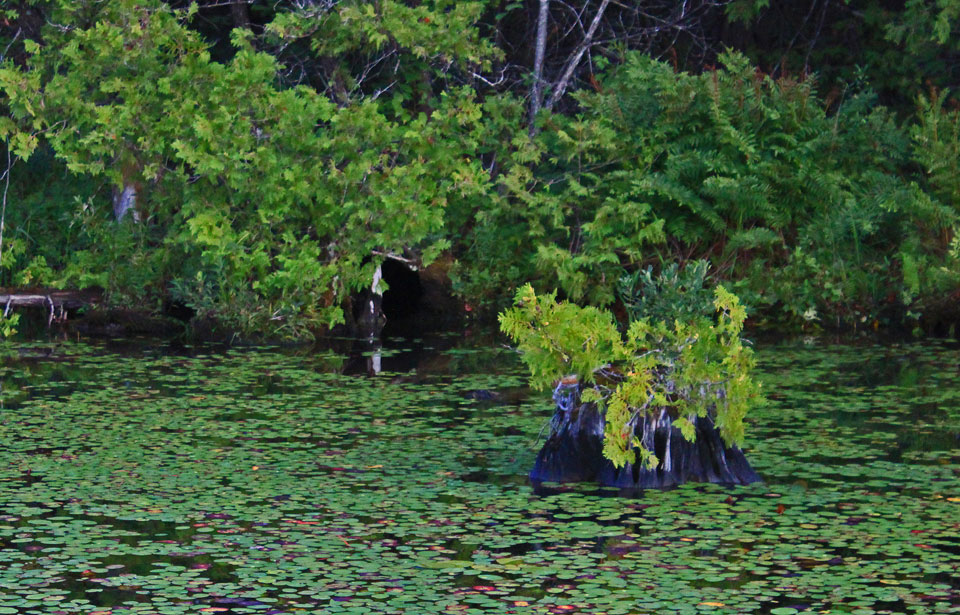Wetlands include, among other waterlogged wonders, swamps, fens, marshes, muskeg, peatbogs, and potholes. Countless species, from mallards to mud puppies, mate, lay eggs, hatch, swim, hunt, and grow in these habitats. Wetlands act as filters by breaking down sewage and harmful contaminants, leaving clean soil and water behind. Common cat-tails and bulrushes absorb toxic metals such as mercury and lead. Wetlands soak up rain and snow like sponges and help to prevent erosion and flooding.
Creating a mini-wetland is surprisingly simple. It may be your key to attracting a host of wet and wild creatures.
- Choose a likely location. Your property may already have a low-lying soggy spot that never entirely dries up.
- If there are no naturally wet areas on your property, create your own. If possible, pick a spot in partial shade.
- Outline the shape of the wetland you want with a length of twine or garden hose. Any size is worthwhile, depending on space available and the energy of volunteer diggers. Even a small wetland will add surprising wildlife diversity.
- Remove any sod and dig a hole 30 to 90 cm deep.
- Line the hollow with a sturdy plastic sheet. If your area gets a lot of rain, puncture the liner in several places to allow slow drainage. If your site is a naturally soggy one, you needn’t put down plastic at all.
- Layer 5 cm of pebbles on top of the liner, then 5 cm of damp peatmoss and some roughly chopped sod. Make sure the peatmoss feels damp when you open the bag. It won’t work if it’s crumbly and dry.
- Now for the plants. Always use native wetland species. Don’t collect them from the wild unless an area is slated for development. Otherwise, purchase plants from a reputable nursery. Wildflowers that thrive along the edges of moist areas include marsh marigold, cardinal flower, blue flag, pickerel weed, and bottle and closed gentian. You can also plant a moisture-loving shrub or two, such as red-osier dogwood or buttonbush, along the edges of your little wetland.



